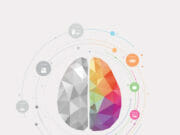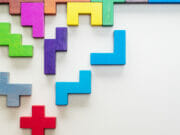
In today's fast-paced world, it's becoming increasingly difficult to escape the grip of our digital devices. We are constantly online, and this constant connectivity can significantly affect our overall well-being. This is where the concept of a “digital detox” comes in.
This article explores the concept of a digital detox, highlighting its surprising benefits for your overall well-being. It also provides practical exercises to help you implement a digital detox. Applying these tools allows you to reclaim balance in your daily life and cultivate healthier media habits.
What Is a Digital Detox?
A digital detox is a period during which you intentionally disconnect from your digital devices and limit your screen time. It is a conscious effort to reduce your dependence on technology and regain control over your life without the constant presence of screens. If you wonder whether you need a digital detox, take a moment to reflect on your daily routine. How many hours do you spend staring at screens? Statistics show that the average person spends about seven to nine hours in front of screens daily. As more and more aspects of life move online, screens have become deeply integrated into our daily lives—from the moment you wake up with your phone, throughout the day with your laptop, tablet, or TV, all the way until you go to bed.
The Benefits
- Reduced Stress and Anxiety
Constant notifications, emails, and social media updates can quickly elevate your stress levels. A digital detox breaks the cycle of endless information overload. Without the constant digital distractions, your mind has a chance to relax, which in turn reduces stress and anxiety.
- Improved Mental Well-being
A digital detox can also positively affect your mental well-being. Do you often find yourself scrolling through social media? Research shows that whether consciously or unconsciously, you constantly compare your life to what you see on social media. Detoxing from these platforms can help you focus more on your own life and happiness rather than continuously comparing yourself to others.
- Better Sleep Quality
One of the most studied and helpful benefits of a digital detox is improving sleep quality. An important reminder is that all screens emit blue light that can disrupt your body's natural sleep rhythm. By doing a digital detox, you can experience firsthand how disconnecting before bed can quickly positively impact your sleep patterns.
- Increased Physical Activity
A sedentary lifestyle is closely linked to excessive screen time. A digital detox can inspire you to get up and move. You may feel more inclined to engage in outdoor activities, take walks, or even find new motivation for new exercise goals. You will soon discover that rediscovering physical activities improves your health and boosts your mood.
- The Positive Impact on Relationships
Have you ever been with friends or family yet felt disconnected because everyone's eyes were glued to their screens? This is a common scenario in today's digital age. A digital detox can help break this cycle and foster real, meaningful connections.
Disconnecting from digital devices allows you to spend more quality time with loved ones. For example, try suggesting a tech-free zone during a cozy family night—no screens, just conversations or a board game, helping everyone reconnect and enjoy each other's company.
- Boosting Productivity and Creativity
Digital distractions often hinder productivity. While multitasking may seem efficient, it can actually reduce focus and performance. A digital detox helps you regain the ability to focus on one task at a time, increasing your overall productivity.
Moreover, the constant stream of information can stifle your creativity. Taking a break from digital devices creates mental space for inspiration to flow. Great ideas often arise while walking outside rather than staring at a computer screen.
Tips for a Successful Digital Detox
- Identify and Manage Digital Triggers
We all have triggers that prompt us to check our devices mindlessly, whether it's boredom, stress, or habit. Identifying these triggers is the first step in managing them. Replace digital distractions with healthier alternatives.
- Set Clear Goals and Boundaries
Setting clear goals and boundaries is essential when planning a digital detox. Decide how long you want to detox and what activities you will engage in during that time. A digital detox is a great opportunity to rediscover the joy of non-digital activities. Try rediscovering activities that do not involve screens, such as reading physical books or magazines, cooking, gardening, or writing.
- Promote Mindful Digital Use
After your detox, it's important to practice mindful digital use. Be intentional about when and how you use your devices. Setting specific screen-free times during the day can help maintain a healthy balance.
- Start small; for example, set a Screen-Free Morning Routine.
Start your day without touching any digital device for at least the first 30-60 minutes after you wake up. Instead of checking your phone or scrolling through emails, you can connect with your spouse, do some light stretching or yoga, enjoy a cup of tea or coffee while journaling, read a physical book, or go for a walk. These help you begin your day with more focus and intention rather than jumping straight into the digital world.
- Another way to promote mindful digital use is to establish Screen-Free zones, which are spaces in your home or workplace that are free from screens. For example:The dining table:
- No phones, tablets, or laptops during meals
- The bedroom: No screens in the bedroom to help improve sleep quality
- The bathroom: Avoid checking your phone while in the bathroom to disconnect and be present.
- Having dedicated spaces that encourage screen-free activities can help you unwind and recharge.
- Set Tech-Free Hours by designating specific hours in the day when you intentionally disconnect from all digital devices. For example:
– No screens after 8 PM: To improve your sleep hygiene, avoid using digital devices an hour before bedtime.
– Tech-free weekends: Try to disconnect for an entire weekend or a full day.
– Focus on activities that require no screens—outdoor activities, hobbies, or spending time with loved ones.
- Social Media Fast – Choose a day, weekend, or longer to disconnect from social media platforms completely. Try to:
– Deactivate your accounts temporarily or use apps that block access to social media.
– Avoid all digital communication that is not essential (no checking emails, messaging apps, etc.).
– Use the time to focus on hobbies, personal projects, or offline connections.
- Mindful Digital Consumption
Practice more intentional use of digital devices. This includes:- Setting specific times to check your emails, messages, or social media (e.g., once in the morning and once in the evening) rather than constantly checking throughout the day.
- Curating your content—unsubscribe from unnecessary email lists, mute or unfollow accounts that cause stress, and be selective with what you engage with online.
Final Thoughts
In a world flooded with digital devices, it's easy to overlook their impact on our health. A digital detox may seem daunting, but the benefits are truly remarkable. The advantages are well worth it, from better sleep and mental well-being to improved relationships and heightened creativity. Challenge yourself to disconnect for a day, a weekend, or even longer. Embrace the benefits of a digital detox and take a step toward a healthier, more balanced life.
If you are struggling to find balance between screen time and real-life connections, or if you need guidance on managing technology use in a healthier way, reach out to Emerald Mental Health. You can email reini@emeraldmentalhealth.com or visit www.emeraldmentalhealth.com to request a free consultation.
























































































































